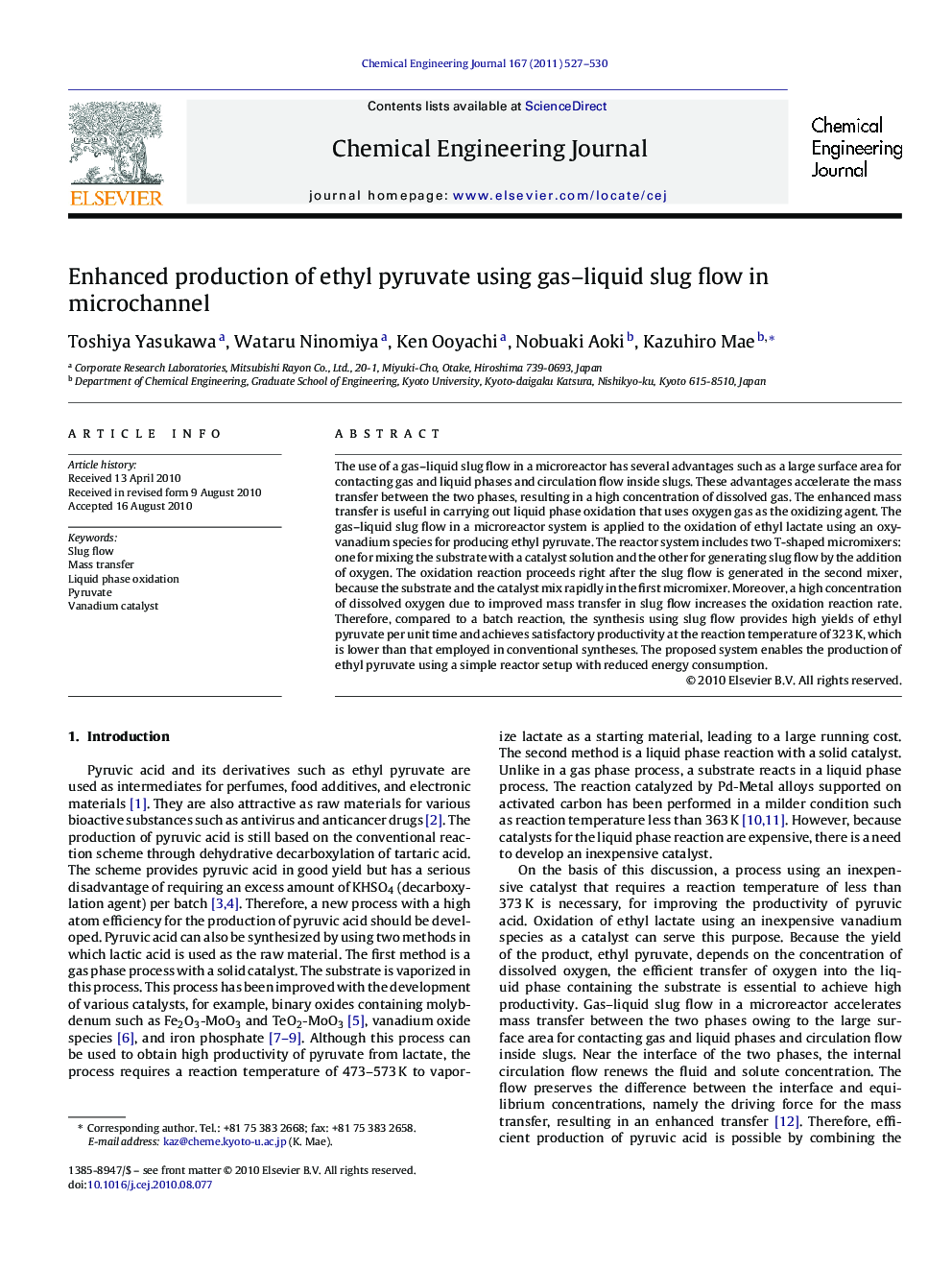| Article ID | Journal | Published Year | Pages | File Type |
|---|---|---|---|---|
| 6588121 | Chemical Engineering Journal | 2011 | 4 Pages |
Abstract
The use of a gas-liquid slug flow in a microreactor has several advantages such as a large surface area for contacting gas and liquid phases and circulation flow inside slugs. These advantages accelerate the mass transfer between the two phases, resulting in a high concentration of dissolved gas. The enhanced mass transfer is useful in carrying out liquid phase oxidation that uses oxygen gas as the oxidizing agent. The gas-liquid slug flow in a microreactor system is applied to the oxidation of ethyl lactate using an oxy-vanadium species for producing ethyl pyruvate. The reactor system includes two T-shaped micromixers: one for mixing the substrate with a catalyst solution and the other for generating slug flow by the addition of oxygen. The oxidation reaction proceeds right after the slug flow is generated in the second mixer, because the substrate and the catalyst mix rapidly in the first micromixer. Moreover, a high concentration of dissolved oxygen due to improved mass transfer in slug flow increases the oxidation reaction rate. Therefore, compared to a batch reaction, the synthesis using slug flow provides high yields of ethyl pyruvate per unit time and achieves satisfactory productivity at the reaction temperature of 323Â K, which is lower than that employed in conventional syntheses. The proposed system enables the production of ethyl pyruvate using a simple reactor setup with reduced energy consumption.
Related Topics
Physical Sciences and Engineering
Chemical Engineering
Chemical Engineering (General)
Authors
Toshiya Yasukawa, Wataru Ninomiya, Ken Ooyachi, Nobuaki Aoki, Kazuhiro Mae,
